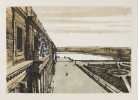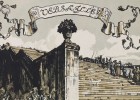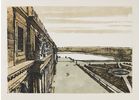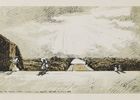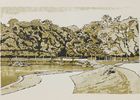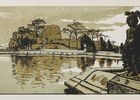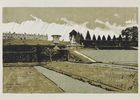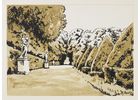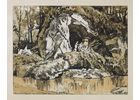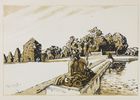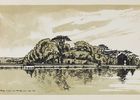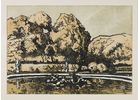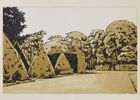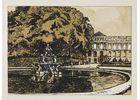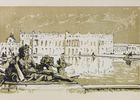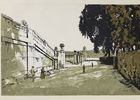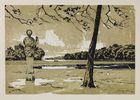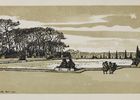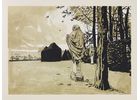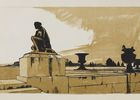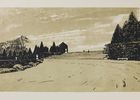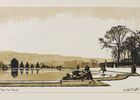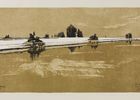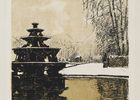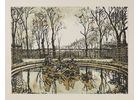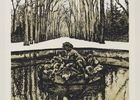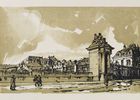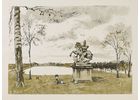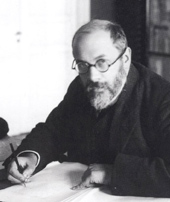
Russian artist, book
illustrator, stage designer and director, art historian and critic, author of
ballet libtretti.
Benois is the son of architect Nikolay Benois and musician Camilla Cavos. He did not receive any formal artistic education and acquired basic painting skills from his brother Albert. In 1893, he presented himself as a landscapist at the exhibition of the Russian Society of Watercolourists; in 1894, as a theoretician and art historian, he wrote an essay about Russian painters for the History of Painting in the 19th Century by German art historian Richard Mutter published in Munich. During his high school (Russian gymnasium) and university years, he met Dmitry Filosofov, Walter Nuvel and Konstantin Somov, later he met Sergey Diaghilev, Leon Bakst and Alfred Nurok. In the 1890s, this circle of like-minded artists created a society which they called Mir iskusstva [“The World of Art”] and formed the editorial board of an art magazine of the same name (1898). Benois was one of the most active figures in that society who revived the book graphic art in Russia. In 1895-1899, he was custodian of Princess Maria Tenisheva’s collection of modern European and Russian painting and graphic art; in 1896 he organised a small Russian section for the Secession exhibition in Munich; in 1896–1898 and 1905–1907 he worked in Paris.
During a few pre-revolutionary
years (1911-1917) he worked as a theatre designer, turned to easel painting and
graphic art creating landscapes of Venice (1912), a Crimean series (1915), a
series of panel paintings for the Kazan Railway Station in Moscow (1914-1917). From
1917, Benois was active in organizing preservation of arts memorials, was
involved in reorganizing the Hermitage and was manager of its picture gallery (1918–1926).
From 1926 he lived in Paris, created set and costume designs for performances in
the theatres of France, Italy and other countries (l’Opera Garnier in Paris, La
Scala in Milan).

